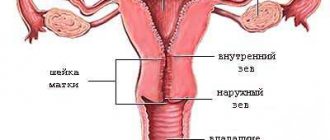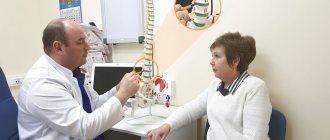- Who needs a consultation with a hematologist?
- What diseases does a hematologist treat?
- How are hematological diseases diagnosed?
- How is treatment carried out by a hematologist?
A hematologist deals with the diagnosis and treatment of diseases of the hematopoietic system. This includes pathologies of hematopoietic tissue, blood and lymph. Pathological processes are divided into malignant and non-malignant. Common hematological diseases are:
- anemia;
- thrombocytopenia;
- blood clotting disorder;
- leukemia;
- lymphoma.
Who needs a consultation with a hematologist?
Most patients are referred to a hematologist by their internist or general practitioner. If there are nonspecific symptoms or if the blood count changes, the attending physician will recommend additional examinations by a hematologist.
The symptoms of hematological diseases are quite extensive. The threat of a disease of the hematopoietic system can be suspected by the following signs:
- a person complains of headache, fatigue, dizziness;
- weight loss without changing lifestyle and diet;
- the patient has increased bleeding: even with a small scratch the bleeding does not stop for a long time;
- the skin bruises easily;
- enlarged lymph nodes, spleen, and liver were detected;
- increased or decreased blood pressure;
- rash or itching on the body without confirmation of a skin disease;
- For some unknown reason, the temperature is elevated.
Externally, blood diseases manifest themselves as paleness, dryness and brittle hair, and hair loss. In some cases, patients also experience eyebrow loss and nails that become brittle. When conducting laboratory tests, changes in blood parameters are observed: hemoglobin, leukocytes, platelets, etc. They may be higher or lower than normal.
Hematologist and IVF
An appointment with a hematologist is important for women before and after artificial insemination. During pregnancy, it is important not only to treat problems with hematopoiesis, but also to identify them in time. The hematologist and immunologist should be directly involved in the prevention of such problems. The doctor should see pregnant women without an appointment, especially if the IVF procedure was carried out in the presence of hereditary pathologies. The doctor is obliged to monitor the woman at the slightest sign of deterioration in health or problems with tests. It is necessary to check the indicators daily in order to detect pathology in time. Undoubtedly, there are situations when women complain that they were sent to a hematologist in vain. All tests are normal, my health is excellent. According to medical statistics, many pathologies during pregnancy with IVF occur hidden, especially when it comes to genetic blood diseases. Therefore, it is so important for pregnant women to obtain timely consultation with a hematologist, regardless of whether pregnancy occurs naturally or with the help of IVF. The significant importance of such examinations can hardly be overestimated for the significance in the development of the fetus and the health of the woman. A referral to a hematologist is given by the attending gynecologist; the patient makes an appointment with the doctor independently.
What diseases does a hematologist treat?
The most common reason for visiting a hematologist is anemia. This disease occurs for various reasons and is characterized by a decrease in hemoglobin levels. Most often it is caused by a deficiency of vitamins and microelements necessary for hematopoiesis: iron, vitamins B12 and B9. Deficiency develops due to a poor diet or impaired absorption of nutrients. Anemia also occurs with massive blood loss, decreased production of red blood cells by the bone marrow, or increased destruction of red blood cells.
A hematologist treats coagulopathy, a disease in which blood clotting is impaired. This pathology can be congenital and is observed in patients with hemophilia, a hereditary disease in which the functioning of genes responsible for the synthesis of coagulation factors is disrupted.
The cause of acquired coagulopathy can be autoimmune pathology, impaired liver function, poisoning with certain poisons, or taking anticoagulant drugs.
Thrombocytopenia is an autoimmune disease in which platelet production is reduced. This leads to increased bleeding and requires consultation with a doctor.
Malignant blood diseases are otherwise called oncohematological diseases. These include tumors of hematopoietic and lymphoid tissues. This category includes lymphomas, which come in different types depending on which cells are affected. Blood cancers also include leukemia, which can be acute or chronic.
The cause of oncohematological diseases is mutations in the genes of hematopoietic and lymphoid tissues. Modern methods of molecular cytogenetic research help to detect which parts of chromosomes have undergone changes. This helps to make an accurate diagnosis and choose the right treatment.
How can a HEMATOLOGIST-HEMOSTASIOLOGIST help?
This question is often asked by patients, not knowing what this doctor does and why they were referred to him. The answer is simple:
this
DOCTOR KNOWS
everything about BLOOD DISEASES
What kind of diseases are these, and how to avoid them, is told by hematologist and hemostasiologist at OKDC Valentina Kutsemelova.
— Valentina Yuryevna, what do hematologists and hemostasiologists do?
— Hematology deals with the study of the structure and functions of the blood system, hematopoietic organs and various blood diseases, and, unfortunately, there are many of them. This is both a science and a branch of medicine, the tasks of which include the creation of new methods for diagnosing, treating and preventing disorders of this complex system.
The difficulty in diagnosing and treating blood diseases is that their manifestations and symptoms are not unique; they occur in many other diseases. Only a hematologist can recognize them, and therefore provide qualified assistance in a timely manner.
Hemostasiology is one of the branches of hematology that studies the coagulation system. The founder of this section in our country was Corresponding Member of the Russian Academy of Medical Sciences Zinoviy Solomonovich Barkagan. A hemostasiologist is directly involved in the diagnosis and treatment of blood clotting disorders in children and adults.
- What kind of violations could these be?
First of all, these are thrombophilias of various origins, both congenital and acquired. In recent years, doctors have increasingly come across the term “thrombophilia”. They often interpret it as a disease characterized by a constant threat of thromboembolic manifestations. However, this is far from true, since thrombophilia is not a disease! According to modern understanding, the term “thrombophilia” only means a predisposition to thrombosis due to genetic or acquired disorders in the hemostatic system. The enormous interest in this problem is explained primarily by its clinical significance, since thromboembolic diseases still represent a global medical and social problem, being the main cause of mortality and disability in industrialized countries.
According to experts, every tenth inhabitant of the Earth during his life experiences such serious consequences of thrombotic processes as acute myocardial infarction, ischemic stroke, deep vein thrombosis, pulmonary embolism, obliterating atherosclerosis of the lower extremities and other clinical manifestations of venous and arterial thrombosis. Currently, with the modern diagnostic base that is available at the OKDC, it is possible to identify the causes of thrombosis in 80% -90% of cases and help the patient.
- Why does this disease occur?
The formation of a blood clot is a dynamic process in which three main factors take part: hemostatic components of the blood, the state of the vascular wall and the dynamics of blood flow (Virchow’s triad). Normally, the components are in dynamic equilibrium, which helps maintain hemostatic balance. Violation of any of the components of Virchow's triad can lead to a change in the hemostatic balance towards insufficient or excessive thrombus formation. In the case of thrombophilia, as a rule, there is a violation of several components of the hemostatic system, and it is very difficult to isolate the leading violation.
But it is impossible to equate thrombophilia, thrombosis and thromboembolism, since thrombophilia determines only a potential possibility, which is not necessarily realized in the form of thrombosis.
Thrombosis is a pathological condition associated with impaired blood flow and ischemia of the organ due to the closure of the lumen of the vessel by a thrombus. Thromboembolism is the obstruction of an arterial vessel by a blood clot that has formed in the overlying parts of the circulatory system and entered the vessel with the bloodstream.
A hemostasiologist must identify the causes of this type of disorder and develop individual treatment tactics. When it comes to pregnant women, we work closely with gynecologists to solve the problems of miscarriage and infertility, to enable the expectant mother to give birth to a healthy baby without causing harm to her own body.
Another important problem is the prescription of hormonal drugs; for such therapy there are many contraindications from the blood coagulation system.
Selection of an individual preventive therapy program for patients taking hormonal drugs, contraceptives or hormone replacement therapy, in the presence of a background thrombophilic condition, is a common problem for several specialists, including a hemostasiologist.
-What else is included in the tasks of a hemostasiologist, and what questions do patients come to you with?
This includes preparation for pregnancy, management of patients with disorders of the hemostatic system, and development of a therapy program in preparation for IVF in patients with pathologies of the blood coagulation system. We carry it out jointly with gynecologists and reproductive specialists. We see patients with genetic, hereditary, thrombophilias, antiphospholipid syndrome, anemia, and a number of other serious ailments.
— What symptoms should alert each of us and become a reason to contact a specialist?
— There are quite a lot of them, I will list only the most common ones. These are general weakness, fatigue, weight loss, lack of appetite, nasal or profuse gum disease, bleeding, and causeless “bruising.”
Such a reason may be a burdened obstetric and gynecological history - IVF failures, early and late recurrent miscarriages, antenatal fetal death and stillbirth, gestosis, fetoplacental insufficiency in previous pregnancies, arterial or venous thrombosis.
— Do doctors of this profile undergo special training?
— A hematologist-hemostasiologist must have a basic higher medical education and undergo additional training in the specialty of hematology, which includes an integral component: hemostasiology. The medical institution where you are visiting must have modern, high-precision laboratory and instrumental research methods. My colleagues from OKDC, for example, completed advanced training courses at leading medical centers in Moscow, St. Petersburg, and in the best foreign clinics.
We have the most powerful laboratory complex in the south of Russia, equipped with advanced technologies and unique equipment, where real aces work. The quality and reliability of the results obtained is controlled by Russian and international reference centers for external quality control. In the laboratory of clinical and hematological research, the composition of blood cells is studied, the effectiveness of hematopoiesis is assessed, the functional activity of platelets is studied, and dozens of other complex studies are performed that help hematologists correctly make a diagnosis, develop treatment tactics and monitor its effectiveness.
As you can see, in order to help a patient, the professionalism of a hematologist-hemostasiologist is not enough; you also need a competent team of doctors of other specialties, modern equipment and the principle of evidence-based medicine.
share information
0
Social buttons for Joomla
How are hematological diseases diagnosed?
Diagnosis begins with examining the patient and collecting anamnesis. The doctor assesses the condition of the skin, lymph nodes, liver, and studies the medical history. The main method for diagnosing hematological diseases is laboratory blood testing. To assess the patient's indicators, a general clinical analysis is performed. Based on its results, further examinations are prescribed.
If a blood disease is suspected, the doctor suggests a bone marrow examination. The condition of the bone marrow can reveal the causes of the pathology. To obtain biomaterial, the patient undergoes a puncture.
A cytological examination of a bone marrow smear is called a myelogram. This procedure has been used in medical practice for several decades. Thanks to modern equipment, a myelogram allows one to literally make a diagnosis at the molecular level and begin treatment at the initial stage of the disease.
If a hematologist detects signs of pathological changes in the lymph nodes or other organs that affect hematopoiesis, endoscopic examination, MRI and other hardware diagnostic procedures are prescribed.
Tests prescribed by a hematologist
To identify the disease after the patient seeks help, a hematologist can prescribe a number of different diagnostic procedures. Such a wide range of studies indicates that the disease is difficult to define, as well as similar symptoms for various ailments.
The most common option for identifying blood diseases is to take a certain amount of blood. It is analyzed by specialists in the laboratory, where various indicators and their changes are studied.
The clear-cut diagnostic options are puncture and biopsy. In the process of making a diagnosis, the hematologist may request additional instrumental and/or laboratory tests.
How is treatment carried out by a hematologist?
Only in 20% of cases does a patient with a blood disease require hospitalization. Other diseases are treated on an outpatient basis. The main role in the treatment of hematological diseases belongs to drugs. Depending on the nature of the pathology, drug therapy is aimed at eliminating the deficiency of vitamins and microelements, normalizing coagulation and other causes of the disease. In addition to medications, blood transfusion procedures and bone marrow transplants are used.
In recent years, the effectiveness of treatment of oncohematological diseases has significantly increased. Targeted therapy methods are used, which are aimed at the affected cells and help preserve healthy tissue.
Sections of hematology
General hematology deals with the diagnosis and treatment of diseases such as anemia, leukopenia (a decrease in the number of peripheral blood leukocytes), pancytopenia (a decrease in the content of red blood cells, leukocytes and platelets in the blood). Oncohematology is at the intersection of hematology and oncology and studies malignant diseases of the hematopoietic system (acute leukemia, myeloproliferative diseases). Theoretical hematology deals with the study of hematopoiesis, molecular genetics of blood and blood transfusion processes.
When to see a doctor
You should contact a hematologist if there is a need to exclude or confirm diseases of the blood or hematopoietic organs. There are a number of signs that may indicate such a pathology:
- Increased body temperature for no reason.
- Enlarged or painful lymph nodes.
- Paleness of the skin.
- Increased fatigue, decreased performance.
- Unsatisfactory blood test results.
- An enlarged spleen or liver detected on ultrasound or other examinations.
- Pain in bones, muscles and joints.
- Sharp weight loss.









